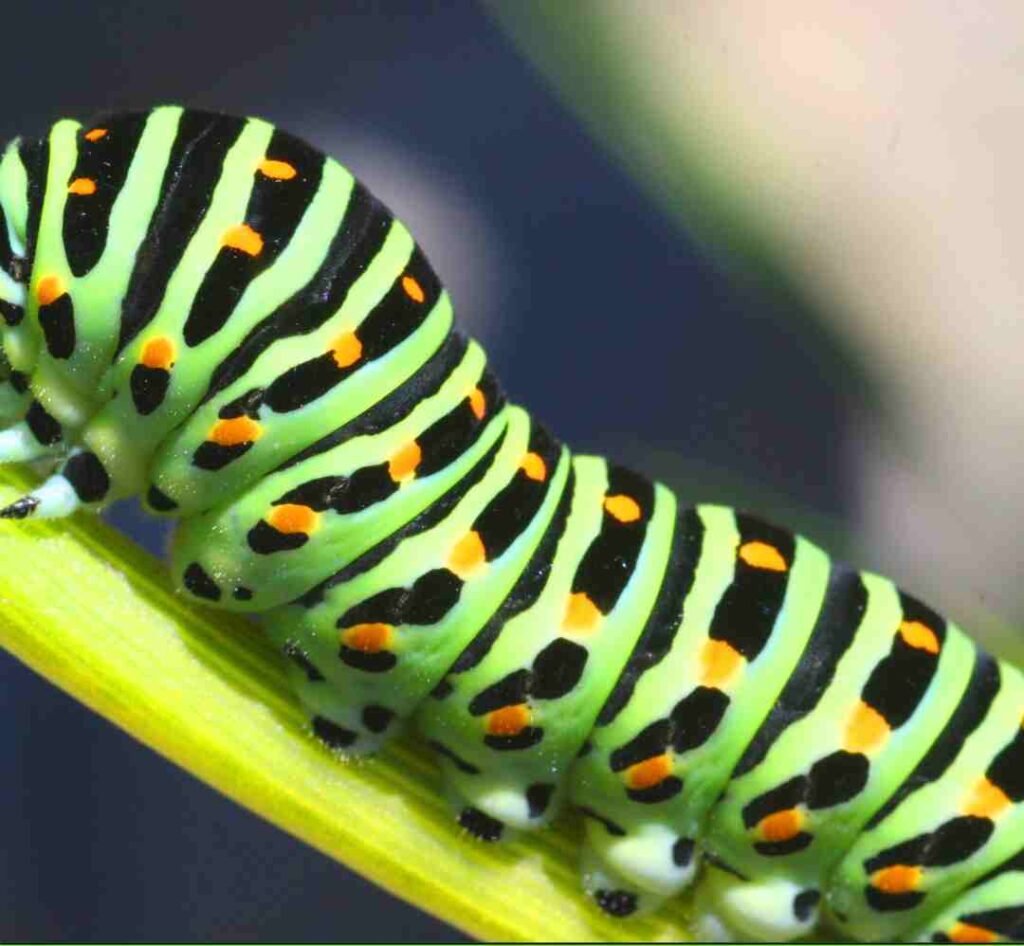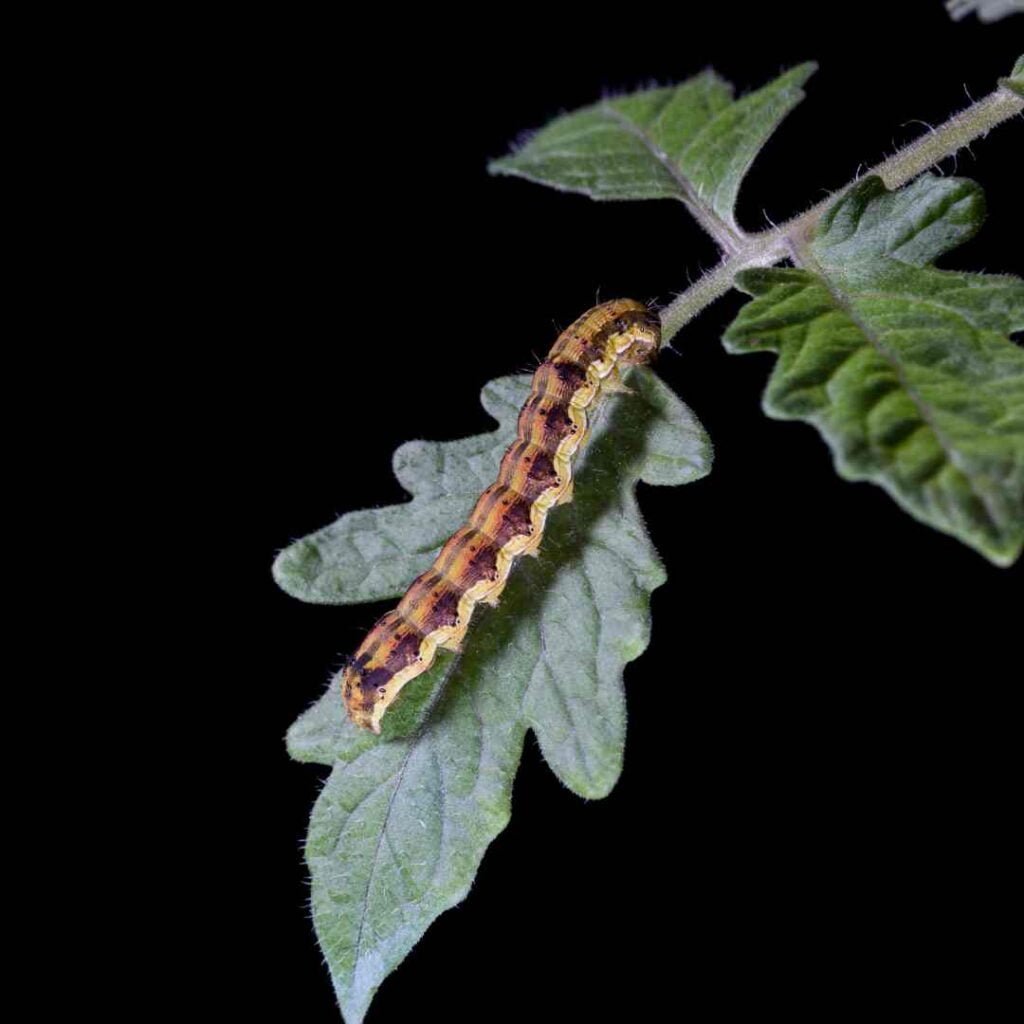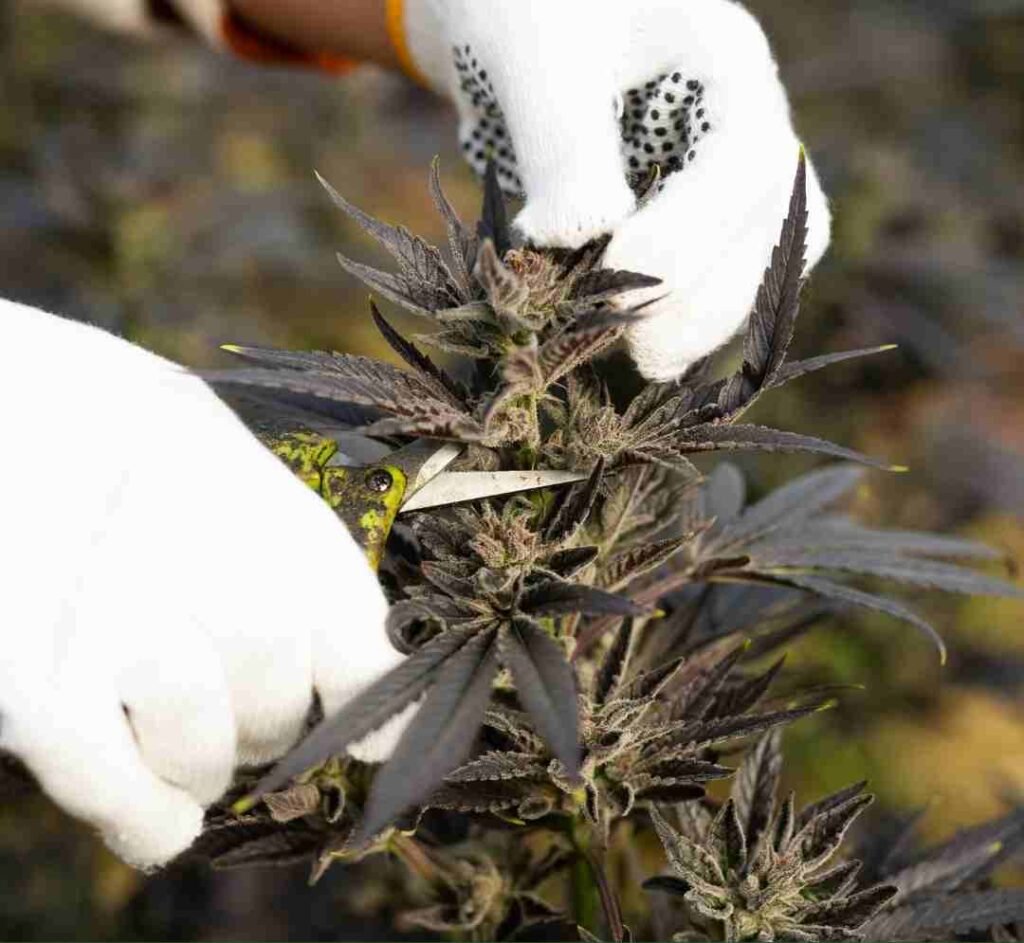
caterpillars in buds at harvest.
Caterpillars, the larvae of moths and butterflies, might be little, but they cause mighty big problems.
The bane of many cannabis growers, these little bud chompers can cause immense damage if they get into buds and other parts of the plant, like the main stem, eating from the inside and potentially weakening or even killing the plant.
However, there ARE some preventative measures you can take to keep these guys away from your precious buds, including regularly inspecting, handpicking, and applying Bacillus Thuringiensis (BT).
In this blog post, we’ll look at how to quickly identify a caterpillar infestation from its early stages, the types of caterpillars that like cannabis plants almost as much as we do, and how to get rid of these darned pests!
Key Takeaways:
- Prevent caterpillar infestations in the first place with the use of BT spray.
- Use your hand to find and pick the caterpillars from the buds. Kill them immediately.
- You may need to pull buds, especially from the tops of plants, to salvage what you can while letting the plant continue to grow and mature.
How to Identify Caterpillar Infestations
Caterpillars start as tiny, harmless organisms but they can grow extremely fast and do a lot of damage quickly.
If you’re spending time in your garden, you might spot these infestations early, if and when they happen. The first sign of an infestation we often notice is the brown, dead-growing plant tips where you would normally expect a nice, healthy cola.

Closeup of caterpillar insect on cannabis plant
This often looks like bud rot, but when you splay the buds out, you’ll find caterpillars inside. They eat off stems and leaves and leave behind brown droppings called “frass.”
Some plant tips affected by caterpillars look prematurely dark, with dead spots on the sides. When you spread these out, you’ll often find a big, fat caterpillar inside, having hollowed out the bud.
This larval tunnelling may also cause some stunting and distortion of stems and stalks, causing a significant effect on yield.
Within the garden, you may have a variety of plant growth—some in a vegetative stage, others in the flowering phase. Butterflies and moths that lay caterpillar eggs are typically attracted to flowering plants, drawn by the strong scent of the trichomes and terpenes.
Check your plants even more closely, especially after they start flowering. If you have problems spotting them with your naked eye, use a lens or magnifying glass.
Types of Caterpillars that Affect Cannabis Plants

Caterpillar Fruit Borer, Helicoverpa armigera
According to recent studies, numerous species of caterpillars have been reported to be damaging to hemp, but corn earworm, H. zea, Eurasian hemp borer, and G. delineana appear to have the potential to cause the most economic damage to cannabis cultivation in Australia.
- The Eurasian hemp borer (Grapholita delineana) is the caterpillar (larval) stage of a small moth that tunnels into the stems and buds of cannabis. It is also known as the Eurasian hemp moth and hemp borer.
- Cabbage moth: This one’s about 4–5 cm in length and is usually pale green but can vary in color. They typically have a broad yellow stripe down the sides.
- Diamond-back moth: The caterpillars are pale green, maturing to brown.
- Angle shades moth: The caterpillars are velvety yellowish-green or brown with darker mottling. Fully grown caterpillars are 3.5–4 cm long.
- Carnation tortrix moth: The caterpillars are pale green, about 15–20 mm in length.
- Cyclamen tortrix moth: The caterpillars (15–25 mm) are dark green to pale brown.
How to Get Rid of Caterpillars in Buds at Harvest
There are a few ways we keep caterpillars off and prevent them from coming back.
Physically Remove the Cannabis with Handpicking
Caterpillars aren’t harmful to humans, so regularly inspect your plants and pick them off with your hands. You can also use a pair of tweezers, but be sure to kill them once you’ve removed them.
Some of the caterpillars are surprisingly small, hanging off leaf tips or burrowed into the buds. In addition, they are more active and easier to spot at night with the help of a torchlight.

Woman inspecting cannabis plant buds with magnifying glass
Using Bacillus Thuringiensis (BT)
Bacillus thuringiensis (BT) is a group of soil microbes, a family of bacteria that are a popular and environmentally compatible biopesticide worldwide.
If you have concerns about BT’s effects on your weed, fret not. BT is dangerous for caterpillars but is safe for us humans because its toxin is safely pyrolyzed, which means it decomposes with high heat if smoked.
As soon as you spray a mix of BT powder and water on your cannabis plants, caterpillars stop eating within hours of consuming the BT poison. They then become flaccid and die several days later.
BT works best against young, small larvae, so you may want to spray at the first sign of caterpillars or crop damage.
BT on foliage is degraded by UV light within one to three days, so you should spray it outdoors in the late afternoon or on cloudy or rainy days to make it last longer. In addition, be sure to spray every few days to keep the bacteria constantly present.
BT isn’t a kill-on-contact spray, so start applying it before your plant starts flowering, ensuring you get a good coat on the leaves and prevent the caterpillars from getting into the early buds.
When you start to see little dead baby caterpillars with this treatment, you know you’re on track.
Removed Affected Buds

Using a pair of scissors to trim cannabis buds
If it’s too late and the bud is too far gone, remove it immediately to prevent the spread of any infestation or disease. In addition, any broken chunks of eaten bud is a hotbed for mold and rot.
Don’t try to save anything that’s been damaged; it is better to lose part of the plant than to lose it all.
FAQs about caterpillars in cannabis buds
Here are answers to a few more common questions we get from our growers.
How Can I Prevent Caterpillars from Infesting My Plants?
You should probably start applying the BT spray even before you see any flowers (usually a couple of weeks before flowers show up), just to get a nice coat on the cannabis leaves and prevent any caterpillar eggs from being laid and growing into bud-damaging adults at harvest.
What Are the Best Methods for Removing Caterpillars at Harvest?
We do recommend handpicking as a sure method for removing these caterpillar pests and killing them, along with trimming affected leaves and buds from your garden to promote general health.
Another weapon is BT spray. Use it multiple times every few days until you notice all the caterpillars are gone.
Can I Still Use Buds That Have Been Affected by Caterpillars?
No, don’t! Damaged buds are prone to rot and mold, which can spread, risking the entire plant. Remove all the affected parts immediately and chunk it.
Conclusion
The key to fighting these pesky little caterpillars is frequently inspecting the plants, handpicking any visible ones, and using BT spray every few days, starting a few weeks before flowering.
In addition, tough cannabis plants are more resilient to damage, stress, and disease, and these plants come from ripper seeds! Shop for your fast-growing feminised seeds at Aussie Hemp Seeds, trusted by Australia’s top cannabis growers!
